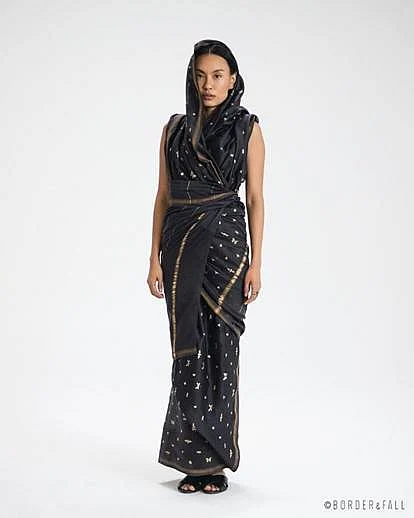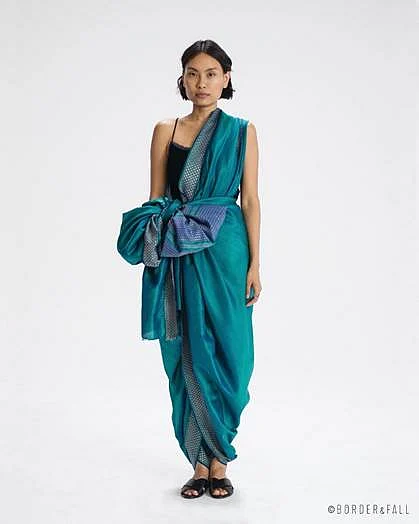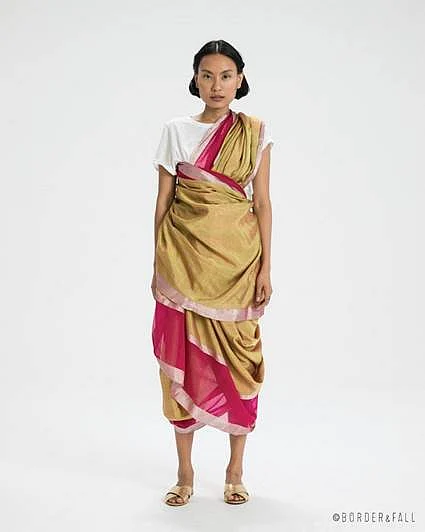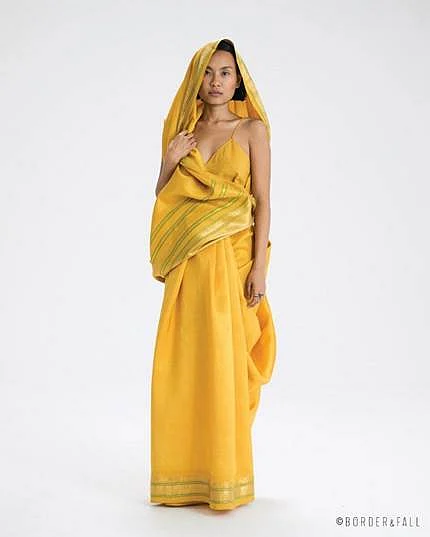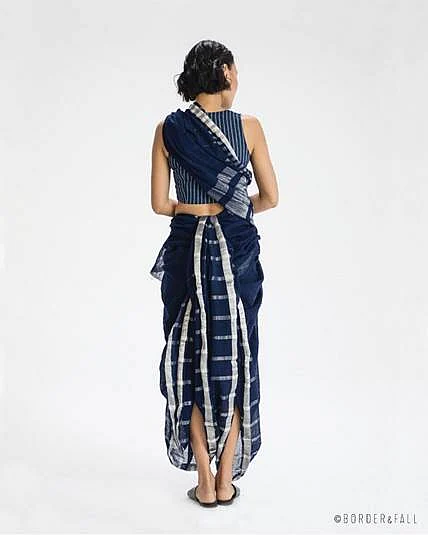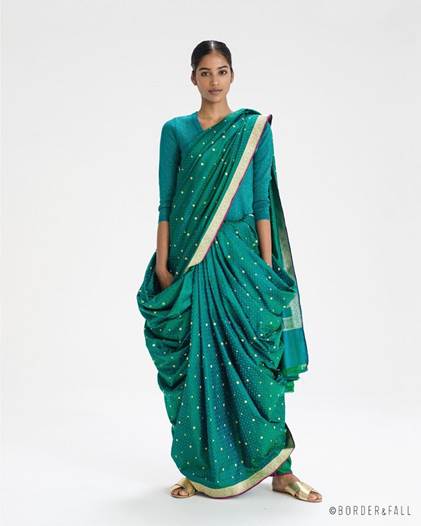The drape of a sari tells many tales, and this Bengaluru company captures them all.
The Sari Series is a digital archive to document the various ways in which saris are draped in India.
The sari is worn by millions of women in India when they are building houses, or cooking, or taking care of their children. As a garment, the sari is very much alive.Malika Verma Kashyap, Founder, Border & Fall
Kashyap is the founder of Bengaluru-based Border&Fall, a digital platform focusing on the fashion and craft community in India.
For close to two years now, her organisation has been working on The Sari Series. Malika, who is also the Producer and Creative Director of the project, says
It is such a powerful garment and symbol. It is tied to the livelihood of a lot of people. Also, the kind of sari, and the way it is draped tells a lot about the person wearing itMalika Verma Kashyap, Founder, Border & Fall
Even though there are more than a 100 ways to drape a sari, the most standard is the Nivi style – the pallu is draped over the left shoulder – that is said to have originated in Andhra Pradesh.
The Sari Series wants to create a digital anthology of the sari drape through 84 how-to-drape videos and three short films on the past, present and future of saris, all of which will be published in the Fall of 2017.
For now, they have pre-released nearly 60 pictures from their collection on the Google Arts and Culture’s #WeWearCulture platform.
So there's the Halaki Vokkaliga Sari Drape from Karnataka, Dharampur Sari Drape from Gujarat, Purnia Sari Drape from Bihar, Mukkala Chira Sari Drape from Andhra Pradesh, Bharatnatyam Sari Drape from Tamil Nadu and Dhangad Sari Drape from Goa.
There are also snippets about the origin of different kinds of saris, the designs and drapes.
The Telia Rumaal Sari, for instance, was earlier designed for use as a neck scarf in the Middle East. The history of the Mysore Silk Sari can be traced back to the 18th century, when the then ruler Tipu Sultan is said to have encouraged the production of silk from Indian mulberry silkworms. The Parsi Gara Sari from Gujarat has its origins in present day Iran, dating back to the Bronze Age.
Last year, Border&Fall started a Kickstarter campaign to raise funds for their ambitious project, and have collaborated with several professional including Rta Kapur Chishti, a textile expert and author of Saris: Tradition and Beyond in 2010.
(This article has been published in an arrangement with The News Minute)
(This admission season, The Quint got experts from CollegeDekho.com on board to answer all your college-related queries. Send us your questions at eduqueries@thequint.com)
(At The Quint, we question everything. Play an active role in shaping our journalism by becoming a member today.)
.jpg?rect=0%2C0%2C750%2C422&auto=format%2Ccompress&fmt=webp&width=720)

